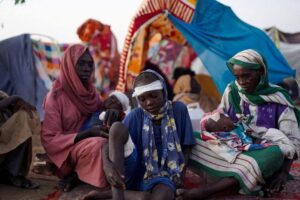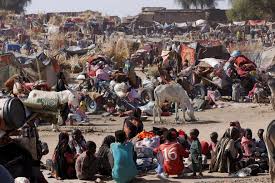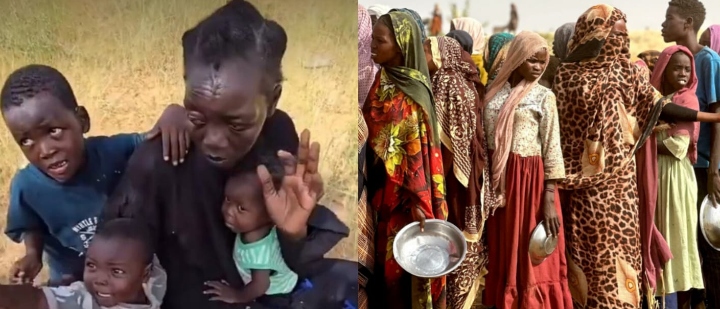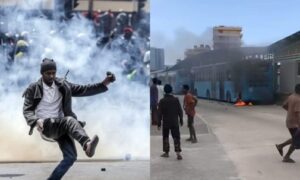They came to El Fasher before sunrise. Shadows in the alleys. The rumble of trucks. The stench of smoke.
When the gunfire ended, the streets of El Fasher were littered with bodies: men, women, children, the old, and the sick.
The city that once pulsed with trade and chatter had turned into a graveyard.
A massacre in real time
On October 26, 2025, the Rapid Support Forces (RSF) stormed into El Fasher, Darfur’s last major city still under Sudanese army control.
Within hours, entire neighbourhoods were flattened. Hospitals were hit. The Saudi Maternity Hospital, once a refuge for the injured, became a slaughterhouse.
Doctors and aid workers who managed to flee speak of executions, rape, and the burning of the wounded alive.
Witnesses estimate more than 1,500 people killed in the first three days; others place the toll beyond 2,000.
By October 27, RSF commanders declared victory.
By October 29, satellite images revealed new mass graves on the city’s outskirts – confirmation of what survivors had already whispered on TikTok and Telegram: this was not war; it was extermination.
READ ALSO: Muhoozi Kainerugaba: Reactions as Museveni’s Son Threatens to Invade Kenya

How the war began
The bloodletting did not start here. It began on April 15, 2023, when Sudan’s uneasy power-sharing pact exploded.
The Sudanese Armed Forces (SAF), led by Gen. Abdel Fattah al-Burhan, clashed with the RSF, commanded by Gen. Mohamed Hamdan Dagalo – Hemedti – his onetime ally turned rival.
The feud tore through Khartoum, then fanned west toward Darfur.
By mid-2024, the RSF had captured most of the region’s towns. Only El Fasher remained.
The city, swollen with more than two million displaced people, became a symbol of resistance and survival.
The RSF answered with siege. By August 2025, aid routes were blocked, food ran out, and cholera spread through the camps.
Air strikes and artillery turned markets into craters. The UN called it a “city under starvation”.
The final assault
Then came October 2025. The army, battered and starving, quietly withdrew. The RSF rolled in – hundreds of technicals, drone strikes, and cheering fighters. They filmed themselves dancing among corpses.
Inside the city, civilians were trapped. In the Saudi Hospital, witnesses counted over 460 people killed – patients, nurses, and children.
“They came room to room,” said a doctor, “and shot everyone who moved.”
A day later, videos showed black smoke spiralling over the northern quarter, where the Zamzam Camp, home to hundreds of thousands of displaced Darfuris, was pounded again.

Echoes of 2003
The pattern is chillingly familiar. Two decades ago, in 2003, these same plains ran red when Janjaweed militias – the RSF’s predecessors – razed Darfurian villages under the banner of “counter-insurgency”.
The same rhetoric, the same methods, the same victims. Now the RSF, dressed in new uniforms but carrying the same ideology, is finishing what the Janjaweed began. Ethnic cleansing, reborn under new command.
A nation unravelling
Sudan is collapsing in slow motion. Nine million people have fled their homes. Over half the country’s hospitals are shut. Children scavenge for food amid ruins. Satellite photos show whole districts erased.
Aid convoys wait at borders; bureaucratic red tape and sniper fire keep them out.
“We can see the hunger on live streams,” said one UN worker, “but we can’t reach them.”
Where is the world?
The UN, African Union, and Arab League have all condemned the killings. But condemnations cannot feed the living.
Sanctions remain patchy. The International Criminal Court has opened files, but witnesses are dying faster than cases progress.
Meanwhile, RSF commanders still court backers across the region – gold traders, smugglers, mercenary networks – ensuring the guns never go silent.
The United States, the EU, and the Gulf states have issued statements of “grave concern”.
Yet, as one Sudanese activist posted on X (Twitter): “Grave concern does not stop the graves from filling.”
READ ALSO: Is William Samoei Ruto Arguably Kenya’s Worst President Ever?
PAY ATTENTION: Reach us at info@gotta.news.




















